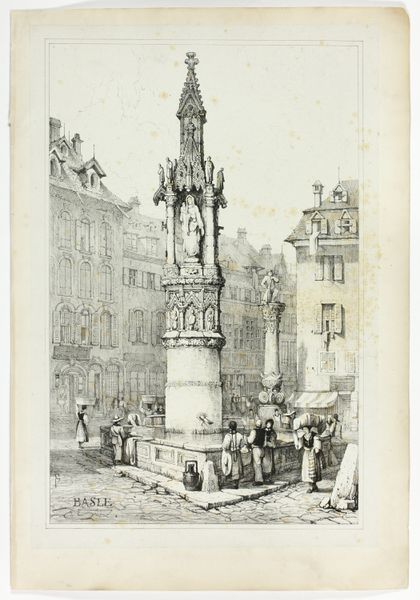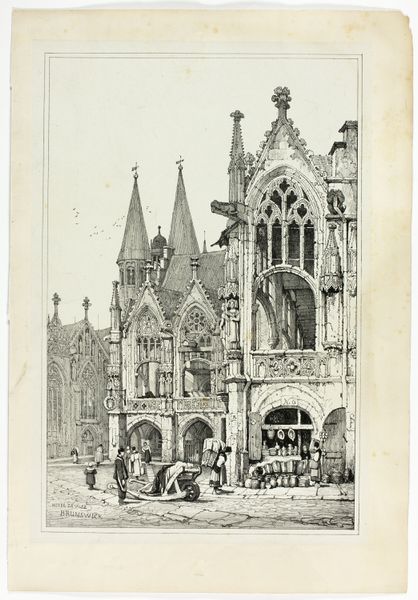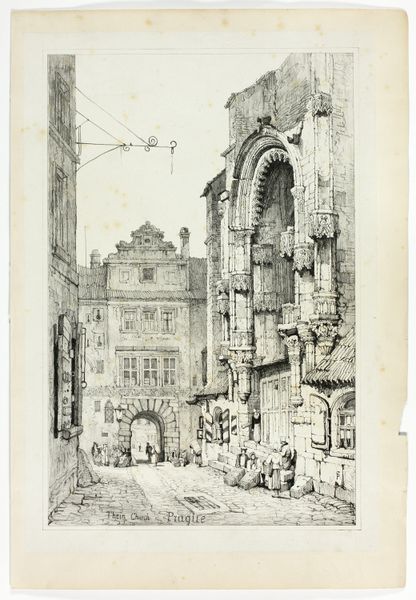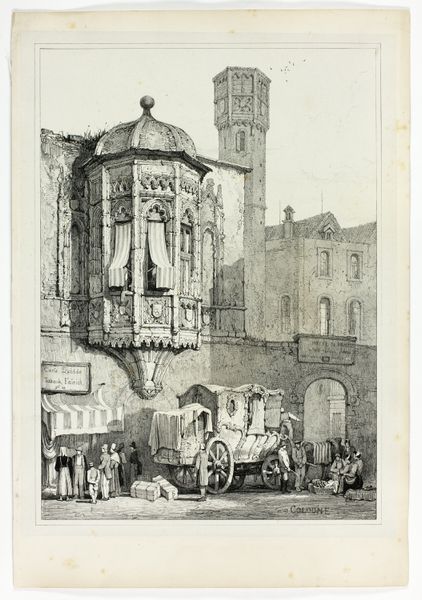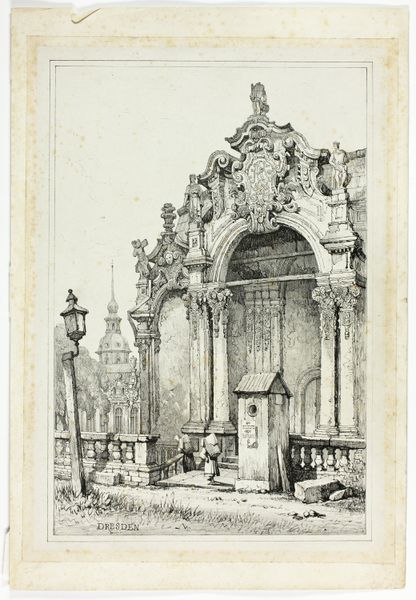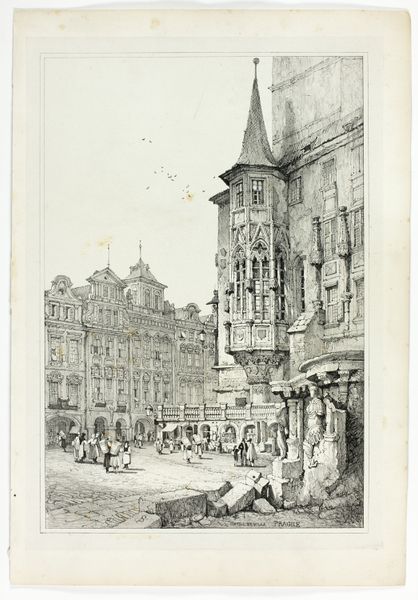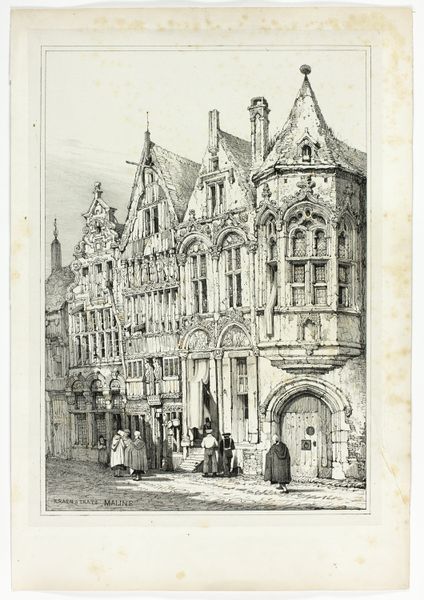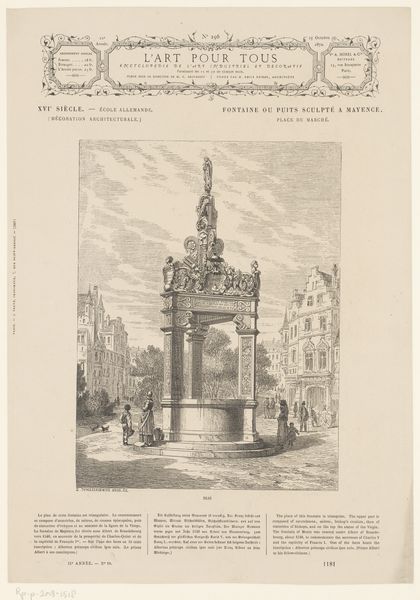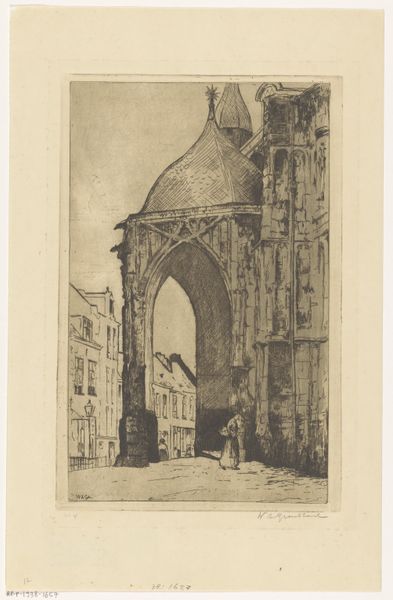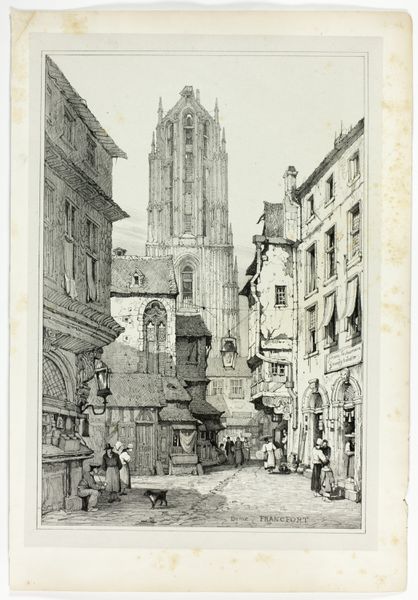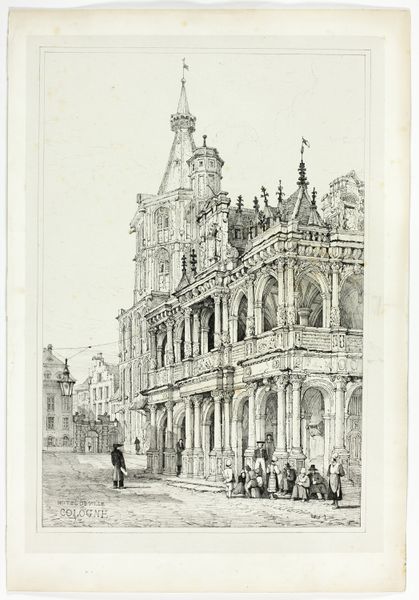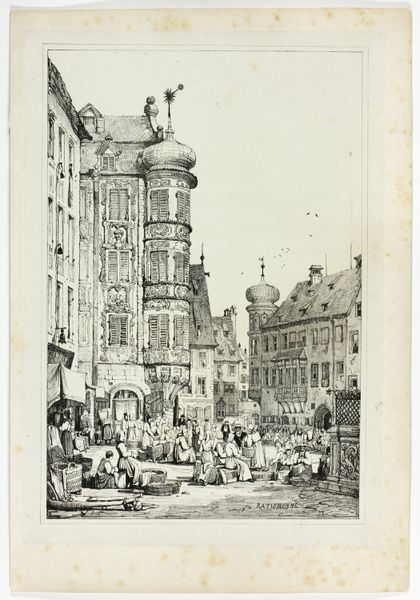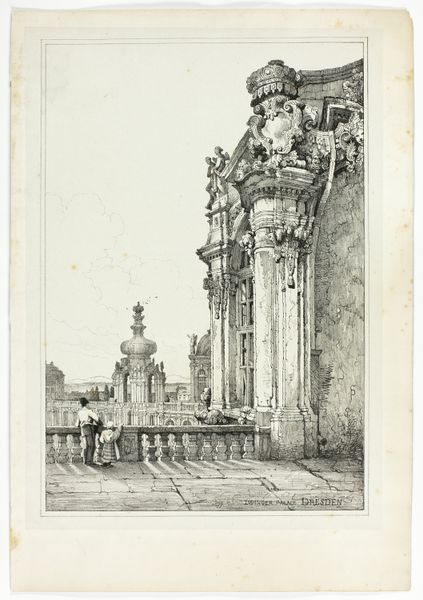
drawing, lithograph, print, paper, ink
#
drawing
#
lithograph
# print
#
landscape
#
paper
#
ink
#
romanticism
#
cityscape
Dimensions: 290 × 425 mm (image); 310 × 445 mm (primary support); 345 × 500 mm (secondary support)
Copyright: Public Domain
Editor: This lithograph, "S'Omer, Strasbourg" by Samuel Prout, completed in 1833, offers a striking cityscape. I’m immediately drawn to the contrast between the dark, looming structure in the foreground and the delicate cathedral rising in the background. What layers of meaning do you find in this work? Curator: Prout’s "S'Omer, Strasbourg" is brimming with cultural memory. Note the fortress-like structure, it evokes a sense of the city's history and resilience through conflict and protection. Then see how the cathedral, bathed in light, represents a spiritual aspiration. Prout seems to have strategically framed the divine and the man-made – doesn’t it give you a sense of the push and pull of power? Editor: Absolutely, I see that interplay. It makes me wonder about the people populating the marketplace; they seem so small and incidental compared to the architecture. Curator: Exactly! The Romantic era was all about the sublime, and Prout uses scale to emphasize humanity's place within a much larger, historically weighted landscape. Consider the choice to portray the figures in such casual stances. Editor: It is as if they’re dwarfed not just by the architecture but by the weight of time itself. Almost frozen in place. Curator: And what about those little flags atop the foreground structure? Consider that visual detail -- a proclamation? A symbol of possession, and a mark on this urban stage? Editor: That’s a fascinating point. The flags contribute to this multi-layered impression; an atmosphere charged with spiritual yearning and an undercurrent of temporal and militaristic force. I initially focused on the formal aspects, but I see how much symbolic weight is packed into this image. Curator: Yes. These images invite us to decipher how cultural identity takes root, in structure, in symbol and, most enduringly, in the collective unconscious.
Comments
No comments
Be the first to comment and join the conversation on the ultimate creative platform.
